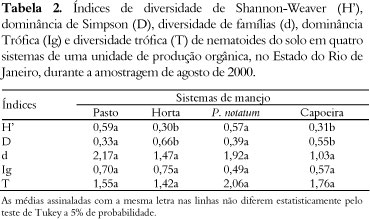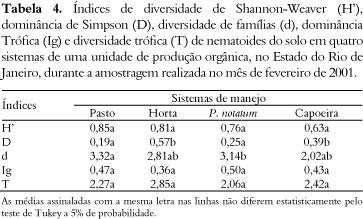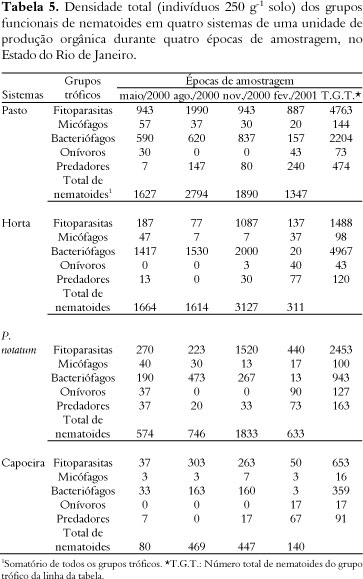Soil nematode communities were studied in four differents crop systems at the Integrated System of Agroecological Production. Soil samples were collected at four-month intervals during one year, with three replications for each location. Nematode communities were measured by the following parameters: family richness, Shannon-Weaner's index, Simpson's index, trophic diversity (T) and dominance index (Ig). These data were submitted to ANOVA statistical analysis at 5% level of Tukey's test. The population of bacterivores and herbivore nematodes was high in all areas. Omnivores were found in lower abundance in all systems. The highest diversity of nematode families was found on pasture. In forests, the values of richness and abundance were always lower but constant in time, suggesting an ecosystem of higher stability. Soil management induced the proliferation of bacterivores usually associated with higher decomposition rates of organic matter. Herbivores and bacterivores were dominant in all systems, suggesting it is important to have high root (for pasture) or high decomposition rates (for horticulture system). The relative distribution of trophic groups of soil nematodes proved to be a good way to determine the level of perturbation of ecosystems.
microfauna; crop system; diversity







